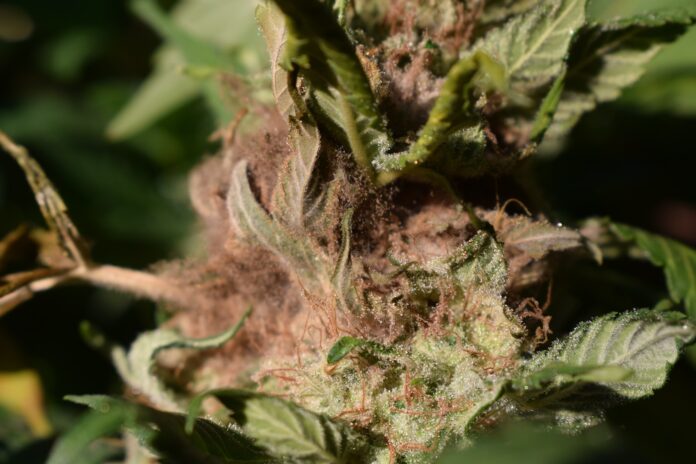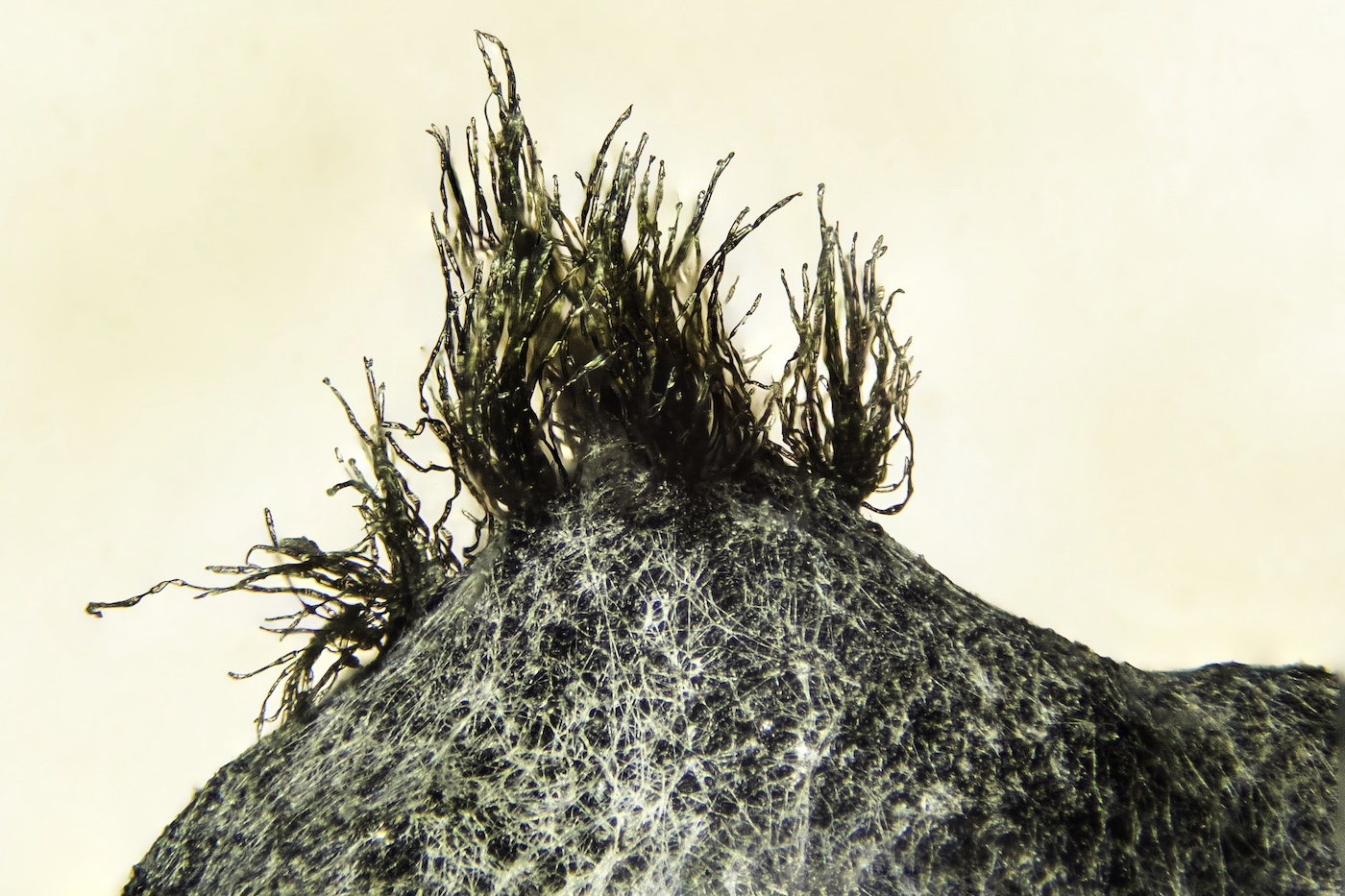
Bud rot—also known as botrytis or bud mold—is a common fungus problem that affects cannabis grow rooms and farms across the entire agricultural sector. This anamorphic fungi in the family Sclerotiniaceae thrives in high humidity and outdoor environments, destroying plants quickly if not addressed. Luckily, bud rot is easy to prevent if you have the right knowledge and resources to address the root causes.
We sat down with a few cultivation experts to discuss the main causes of bud rot, some tips for preventing this type of mold, and what to do when botrytis attacks healthy plants.
-

Microscopic view of bud rot botrytis. Photo: sruilk / Shutterstock
Five causes of bud rot
Whether you know it as bud rot, botrytis, or bud mold, there’s no denying this type of fungus can cause a significant amount of damage to your crop. Here are five of the main causes to keep in mind so you can stop bud rot before it begins.
1. Unpredictable environmental conditions
While fungal infections can occur in an indoor grow space, bud rot is much more common with sungrown cannabis—mainly because this fungus thrives in unpredictable weather conditions.
“Decay is what causes bud rot, and your plants will be particularly susceptible to it if they’re being grown in weather that varies widely from season to season,” said organic farmer Scott Vaserling, founder at Humboldt Family Farms. “Your plants will be particularly vulnerable during the flowering stage. If you get rain and then really warm, humid weather the following day, it can cause major problems.”
2. High humidity levels
Environments with high humidity levels are more susceptible to bud rot. This is especially important to consider when dealing with big buds and colas, which are more likely to trap moisture in their dense, cushy real estate.
“When buds grow big and dense—well, it’s normally a good problem to have,” said Josh Caruso, founder of The Farmers Cup competition. “But unfortunately, huge buds come with water in the leaves, and when you have buds forming at a fast rate, moisture can easily get trapped. Think of it this way: if you leave a load of laundry in the washer for a few days, it won’t smell very good. So if your plant material is moist on the inside, you’re essentially inviting an internal bud rot problem to take effect.”
3. Careless bud pruning
According to Vaserling, lazy manicuring practices are a common cause of bud rot.
“From a farmer’s standpoint, a huge error I commonly come across is growers failing to break their cannabis leaves all the way off at the stem,” Vaserling said. “If you don’t break that stem off all the way, it can decay. That decay then goes into the center of your bud, and those infected areas will rot from the inside out.”
4. Supersized cannabis buds
When trying to avoid mold spores in a grow space, it’s important to be selective about which strains you’re growing and the size of the buds those strains typically produce.
Some strains have a higher incidence of bud rot than others, especially those that are prone to develop dense, heavy colas. Ask your breeders about mold-resistant strains that perform well in wet climates if you’re struggling with humidity or moisture control.
5. Poor pest control
Another reason outdoor growing puts cultivators at a higher risk for bud rot is the inherent presence of pests. Those little guys can act as powerful facilitators for infected buds—especially in the early stages of growth.
“Here in Southern California, the main cause for bud rot is pests: specifically caterpillars. I love butterflies, but as a grower, you have to learn very quickly to keep them away if you don’t want infected plants,” Caruso said.
“Their eggs are like little worms that burrow into the plant and start eating. And once they’ve eaten, they poop. That pest poop is way worse than moisture being trapped inside your buds; now, you’ve got moist, rotting fecal matter that creates the exact same issues, but way worse.”
How to fix bud rot
If you currently have bud rot and are wondering how to get rid of it, you’re not going to like this section. Unfortunately, once bud rot has infiltrated your plant, there’s no going back. It’s simply time to cut your losses and save the other buds on your plant.
“I’ve looked into possible solutions deeply because it’s a huge problem for a lot of farmers, but unfortunately, bud rot is one of those things where, if it happens, you’re better off cutting that bud immediately and throwing it away,” Caruso said. “It will spread like cancer if you let it. There are people who will see it happening and just sell that plant at a cheaper rate, but this is honestly one of the worst molds there is. If you smoke it, you’re straight up smoking mold spores.”
The latest way to address bud rot is known as cannabis remediation: a budding approach that claims to remove all traces of mold, pathogens, and bacteria from cannabis leaves and buds through vacuuming, steam cleaning, UV light, ozone shock, and radiation sanitizing. However, it’s understandably controversial and still in its early stages of development. In addition, remediation can be expensive and negatively affect the bud’s flavor, potency, and terpenes.
How to prevent bud rot
Bud rot may be impossible to reverse, but it’s definitely possible to avoid with the proper preventative measures.
“You have to make sure you’re setting eyes on your plants on a daily basis,” Vaserling said. “Thankfully, bud rot is not like a powdery mildew that spreads. It’s very specific to that individual bud. As long as you cut it out and secure airflow for the rest of your plant, you can eliminate any chance of it spreading.”
Outdoor growers can also prevent bud rot by investing in a fine gardening net to place over their crops. This provides shelter to keep the pests out. According to Caruso, if you pair a net with Monterey B.t. spray, worms definitely won’t want to eat your plants.
Frequently asked questions about bud rot
What is bud rot?
A common agricultural fungus that can severely damage cannabis plants.
What causes bud rot?
Bud rot can be caused by growing plants in unstable temperature and humidity ranges, growing oversized buds without checking on them properly, having poor pest control, and getting lazy about regularly trimming fan leaves.
What does bud rot look like?
Your buds will start to look unhealthy and you’ll see signs of rotting. Keep an eye out for dark spots, sliminess, or black pieces of pest poop.
Once you see signs of bud rot, it’s already too late—the fungus has taken over and it’s time to cut your losses by removing the infected bud.
What are the symptoms of early bud rot?
You won’t be able to see any clear signs of early bud rot. Once those symptoms are recognizable, it’s unfortunately already too late.
What does bud rot smell like?
There isn’t a definable bud rot weed odor. The clues you’ll want to look out for are all visual and best detected with a magnifying glass and a careful grower’s hand.
What temperature can kill bud rot?
Most experts recommend keeping the grow room’s temperature at around 68 degrees Fahrenheit or warmer if you want to ward off bud rot, but you’ll want to place your focus on humidity levels more than temperature when it comes to risk mitigation.
